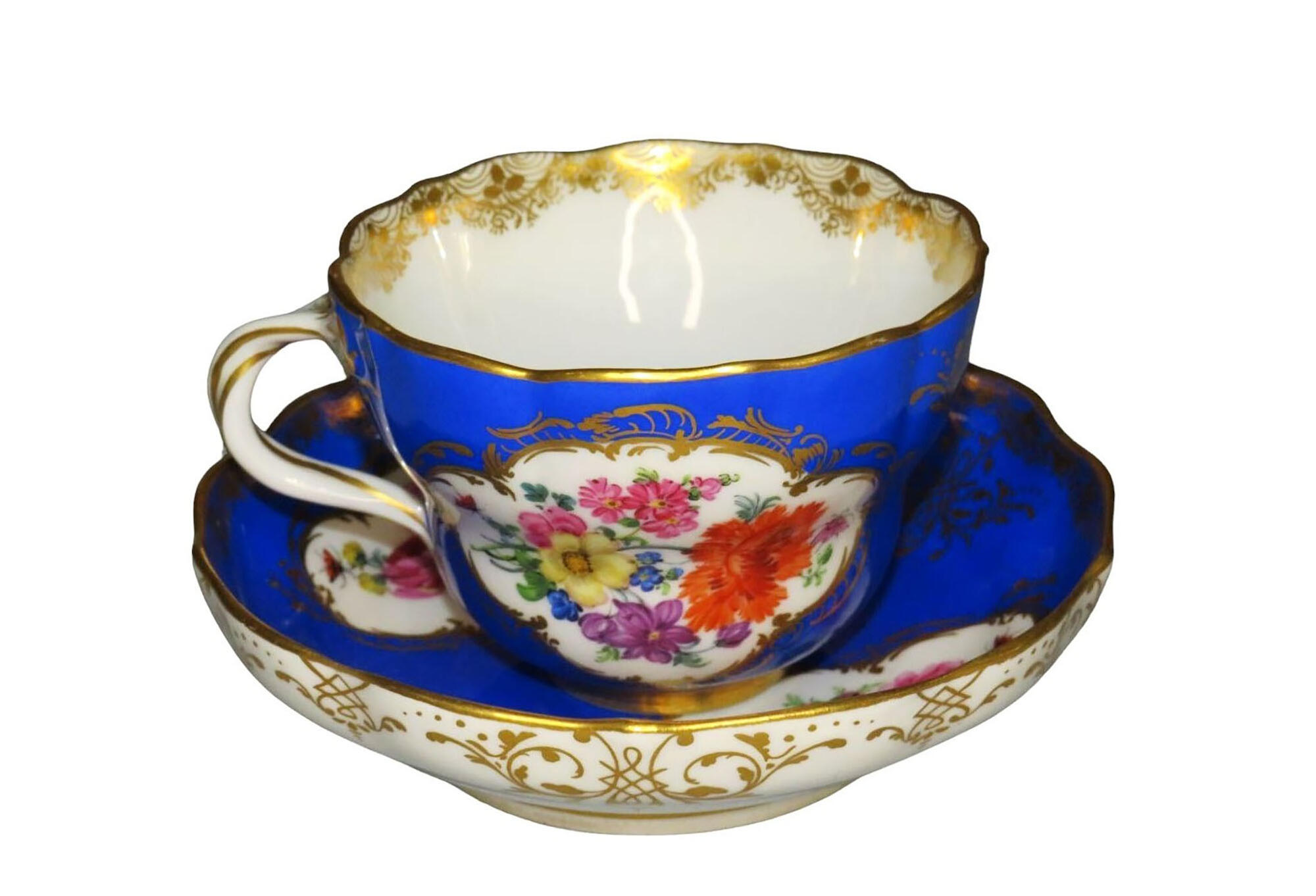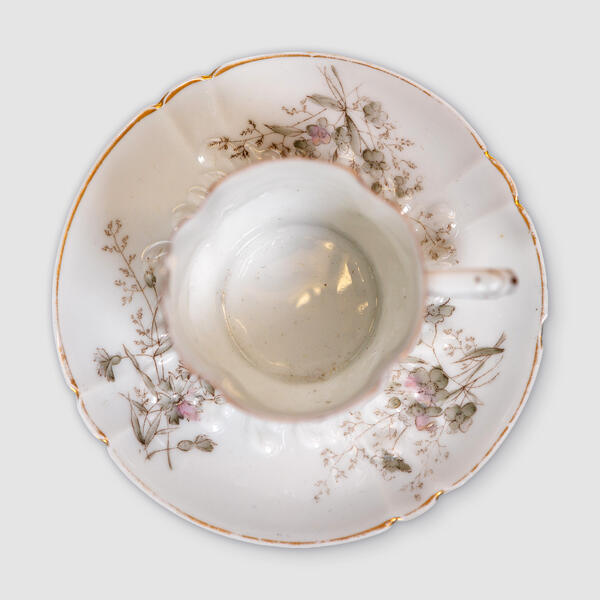The collection of the Ivanovo Museum of Local History presents a porcelain cup and saucer set, that was produced at the famous Meissen porcelain manufactory in the 19th century.
Porcelain was invented in China, and its recipe was kept secret. For a long time, Europeans called it “the miracle of the Celestial Empire”. Only in the early 18th century, the mathematician and philosopher Ehrenfried von Tschirnhaus and the alchemist Johann Friedrich Böttger were able to discover the secret of porcelain. Thanks to this discovery, the first European porcelain manufactory was established in Meissen. Soon, porcelain manufactories were opened throughout Europe — in Vienna, Berlin and Copenhagen. Meissen porcelain was made famous by the artist Johann Gregor Herold, who introduced brilliant overglaze colors which made flowers in the pattern seem real. The same traditional floral pattern can be seen on the set from the museum’s collection.
Several ingredients were used to produce porcelain, including white clay (kaolin) and feldspar. Deposits of white clay (kaolin) were found near Dresden. The techniques of overglaze painting and relief pattern were used when decorating the cup from the museum’s collection. The product was painted after the glazing. An important element that allows to identify a porcelain item as Meissen is the official Meissen trademark in the form of crossed swords. It has been manually applied in cobalt paint on each product before glazing since 1722.
After the establishment of the Meissen
manufactory, its production enjoyed an incredible demand in Europe. Everyone in
the European elite, from kings to princes, had this porcelain. Meissen porcelain
was exceptionally popular in Russia as well. In the 19th century, 40%
of exported porcelain went to Russia. The circle of customers included
Catherine II, princes Yusupov, and counts Stroganov. As collectibles, Meissen
porcelain items still hold great value. Craftsmen have preserved the legacy of
the illustrious manufactory by producing many types of porcelain products,
which are just as good as those in the past. The difference between the new and
old porcelain products is almost imperceptible. All Meissen porcelain is still
made by hand, just as 300 years ago.




